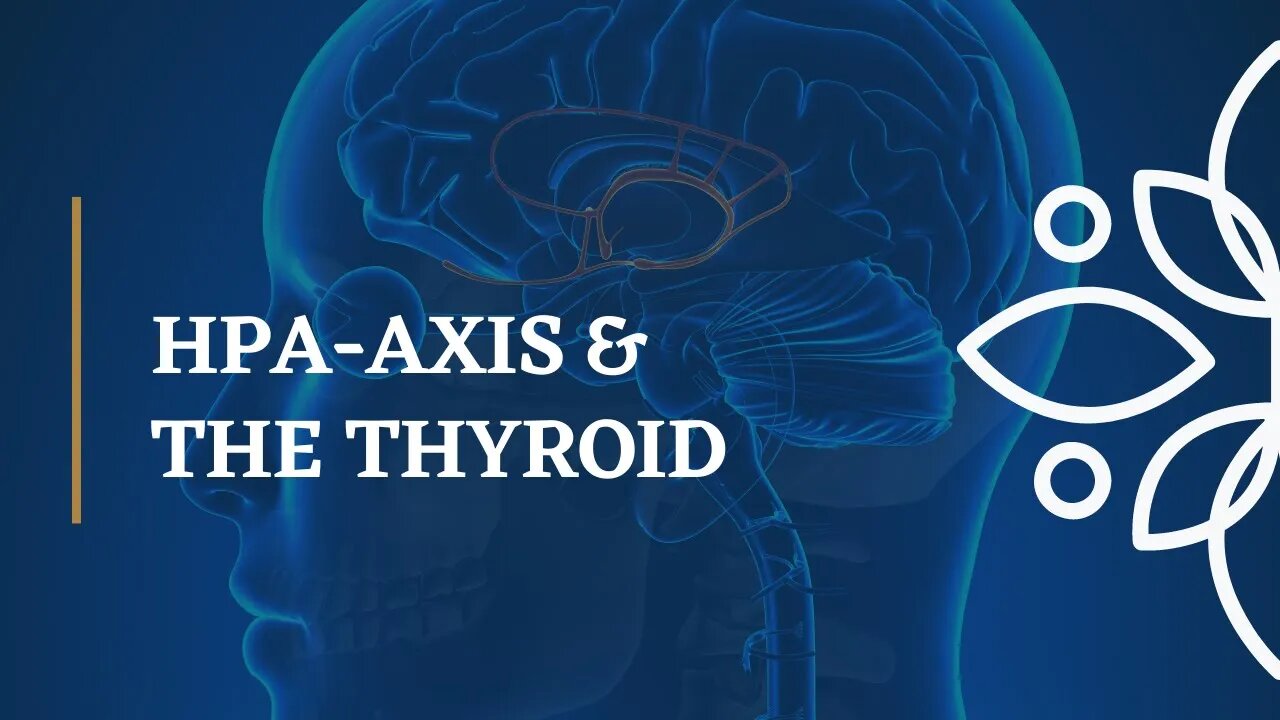Premium Only Content

Impact of HPA-Axis Dysfunction on the Thyroid, Mood and Health
Dr. Dawn-Elise Snipes is a Licensed Professional Counselor and Qualified Clinical Supervisor. She received her PhD in Mental Health Counseling from the University of Florida in 2002. In addition to being a practicing clinician, she has provided training to counselors, social workers, nurses and case managers internationally since 2006 through AllCEUs.com Want to chat with me? Join me at https://members.docsnipes.com/ For $10/month you get access to my daily tips for health and wellness and you can text chat with me privately.
#thyroid #hpa #integrative #depression
Biopsychosocial Aspects of HPA-Axis Dysfunction
Objectives
- Define and explain the HPA-Axis
- Identify the impact of trauma on the HPA Axis
- Identify the impact of chronic stress/cumulative trauma on the HPA-Axis
- Identify symptoms of HPA-Axis dysfunction
- Identify interventions useful for this population
Based on
- Post-traumatic stress disorder: the neurobiological impact of psychological trauma
Dialogues Clin Neurosci. 2011 Sep; 13(3): 263–278.
https://www.ncbi.nlm.nih.gov/pmc/articles/PMC3182008/
- Lifestyle Factors Contributing to HPA-Axis Activation and Chronic Illness in Americans
Archives of Neurology and Neuroscience. 2019 Oct.; 5(2) ANN.MS.ID.000608. DOI:10.33552/ANN.2019.05.000608
https://irispublishers.com/ann/pdf/ANN.MS.ID.000608.pdf
What is the HPA Axis
- Hypothalamic-Pituitary-Adrenal Axis
- Controls reactions to stress and regulates digestion, the immune system, mood and emotions, sexuality, and energy storage and expenditure
- The signs and symptoms of HPA-Axis dysfunction reflect a persistent, abnormal adaptation of neurobiological systems to trauma or chronic stress.
- In addition to trauma, multiple lifestyle factors have been associated with HPA-Axis dysregulation including
- Noise
- Stimulant use (caffeine, nicotine, ADHD medications)
- Insufficient quality sleep
- Media exposure
Consequences of HPA-Axis Dysfunction
- More than 50% of Americans suffer from one or more chronic conditions associated with disturbances of the HPA-Axis with an estimated cost of $3.3 trillion annually including:
- Major depressive disorder (20%)
- Generalized anxiety disorder (18.1%)
- Sex hormone imbalances (25%)
- Diabetes (9.2%)
- Autoimmune disorders (23%)
- Chronic pain
- Metabolic syndrome (30%)
- Cardiovascular disease (44%)
- Hypothyroid (4.6%)
- IBS symptoms such as constipation and diarrhea
- Reduced tolerance to physical and mental stresses (including pain)
Overview of Healthy HPA-Axis Function
- When exposed to a physical, environmental or social stressor, the HPA-Axis is activated and prompts the “fight or flight” reaction.
- Glutamate and Norepinephrine are released
- The hypothalamus releases corticotropin releasing factor (CRF) and arginine vasopressin (AVP) to stimulate the anterior pituitary to produce and secrete adrenocorticotropic hormone (ACTH).
- ACTH causes glucocorticoid (cortisol) synthesis and release from the adrenal glands
Overview of Healthy HPA-Axis Function
- Cortisol’s primary function is to
- Increase blood glucose and modify fat and protein metabolism to fuel the fight or flight reaction
- Modulate immune and brain function to effectively manage stressors.
- Cortisol initially causes a potent anti-inflammatory response which allows the organism to react to the stressor without being pain or fatigue.
- Glucocorticoids interfere with the retrieval of traumatic memories
- As cues of the threat wane, the body increases inflammation by releasing proinflammatory cytokines to accelerate wound healing
Stress Response
- The response of an individual to stress depends not only on stressor characteristics, but also on factors specific to the individual.
- Perception of stressor
- Proximity to safe zones
- Similarity to victim
- Degree of helplessness
- Prior traumatic experiences
- Amount of stress in the preceding months
- Current mental health or addiction issues
- Availability of social support
- Compared to positive events, negative events, or “stress” causes greater awareness and recall of event details leading to stronger encoding of negative or stressful events.
-
 39:10
39:10
DocSnipes
2 years agoTransform Toxic Guilt and Shame: Empowering CBT Methods
248 -
 LIVE
LIVE
Midnight In The Mountains™
2 hours agoThe Midnights Play Arc Raiders | Loot Scoot and KILL | Crypto Wallet up n running GO JOIN THE BETA!
133 watching -
 53:25
53:25
X22 Report
3 hours agoMr & Mrs X - Trump Is Using The Same Tactic As Our Founding Fathers To Rebuild America - EP 17
54.9K11 -
 LIVE
LIVE
PudgeTV
43 minutes ago🟣 Arc Raiders - Gaming on Rumble | Going Topside w My Daughter’s Husband
71 watching -
 2:05:43
2:05:43
LFA TV
20 hours agoRUMBLE RUNDOWN WEEK 7 with SHAWN FARASH 11.22.25 9AM
115K7 -
 LIVE
LIVE
ttvglamourx
1 hour agoGLAMOURX VS CALL OF DUTY LOBBIES !DISCORD
170 watching -
 LIVE
LIVE
DannyStreams
3 hours agoSaturday Morning Tarky
86 watching -
 1:12:53
1:12:53
Wendy Bell Radio
6 hours agoPet Talk With The Pet Doc
18.8K20 -
 LIVE
LIVE
CHiLi XDD
1 hour agoFF7 Remake | Materia Hunting at its finest!
90 watching -
 33:49
33:49
SouthernbelleReacts
20 hours ago $0.99 earnedNOT THE GOPHER 😭🤣 | First Time Watching Caddyshack
7.53K1